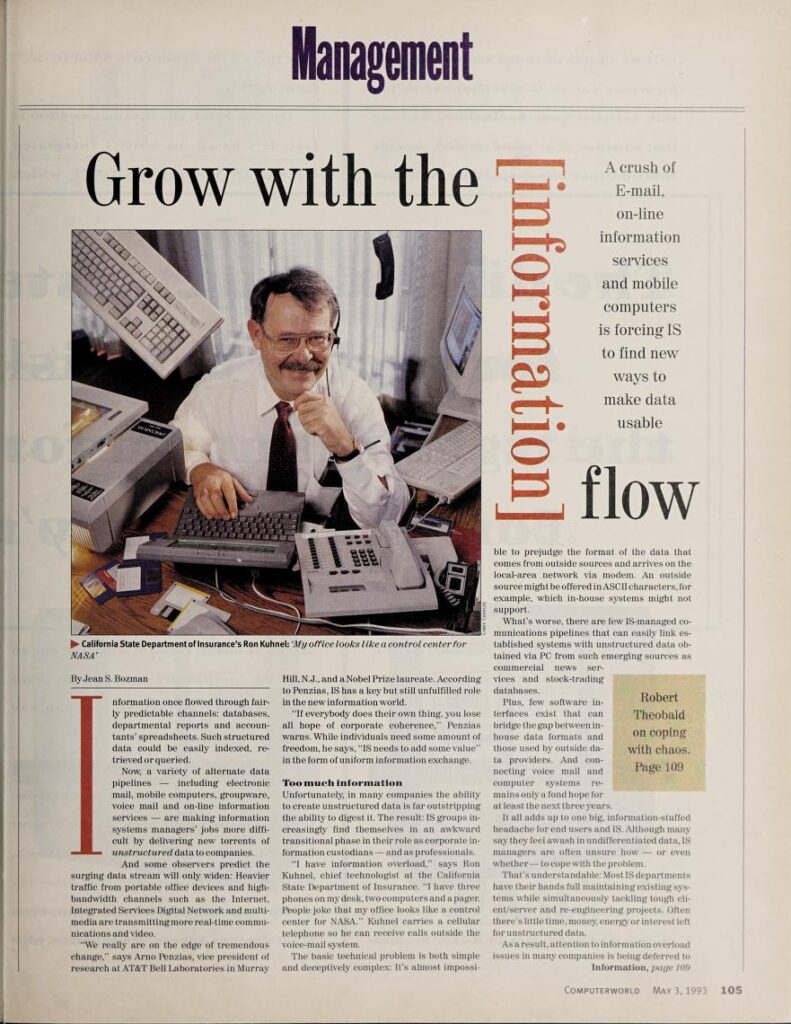May 3, 1993: Computer users overwhelmed by new “unstructured” information streams
A flood of new information streams led to the birth of “information overload” for computer users.

As new information systems emerged, users found themselves overwhelmed by the “torrents of unstructured data” delivered to them, according to a 1993 article in Computerworld magazine. At the time, the limited data infrastructure available to computer users made the growing popularity of email, voice mail, and other information services a nightmare. One person described his work desk, on which he had two phones, two computers, and a pager, as having “information overload.” With advances in database architectures and increased compatibility between data formats throughout the computer industry, the once “unstructured data” of the 90s has become much more manageable today. The term “information overload” remains popular today to describe the endless information available when scrolling through social media applications.
Industries affected by information overload did not immediately have the insights or tools needed to reduce or sort through the flood of data entering their systems. The information systems industry saw a shift during this time, away from a once-popular approach of “more data is better” towards acquiring just the information necessary to complete a job. The needle has since flipped back — with seemingly infinite digital storage and plenty of organizational tools, collecting huge datasets is commonplace today.
The Computerworld article pinpoints inconsistent data formats as one factor complicating the issue. Data coming into a company from outside sources was often formatted differently than standards supported by company systems. At one company, “data vendors” were hired to “sift through raw petroleum industry data” to “get it into a common format” prior to the data being uploaded to internal company systems.
Companies predicted innovations in data architecture would be the key to resolving the information overload. Relational databases, hugely popular today, stood out as potentially promising as a way to store data and make it easy to find later. Another approach considered involved building keyword filters to organize incoming information. This type of filtering has been replicated in modern applications, including email spam filters and social media hashtags, to allow users to quickly sift through huge amounts of data.
–By Kathleen Esfahany